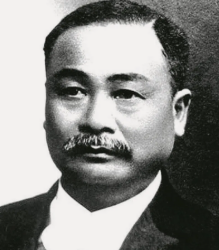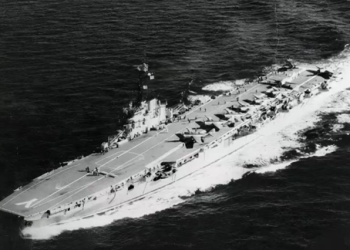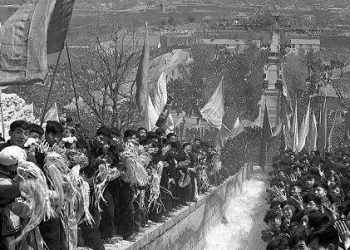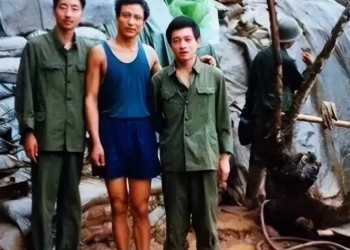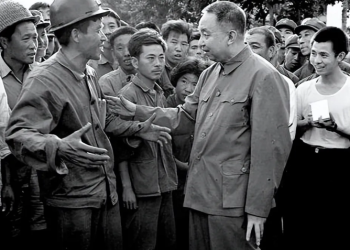The 1980s in China was a decade cloaked in mystery—an era of sweeping change and intellectual awakening. It was a colorful yet innocent time, a recent past already transformed into history. It stands as a visually striking epic, both a morning bell and an evening drum, encapsulating the multifaceted realities of early reform and opening-up. It formed a vital bridge between the reforms of the 1970s and the golden dawn of the 1990s and new millennium. With dust rising and banners flying, it surged irresistibly into the national narrative and forever altered the destiny of a generation.
What marked the beginning of this transformative decade?
Politically, it was defined by the aftermath of the Third Plenary Session of the 11th Central Committee, and the return of open agricultural markets—once condemned as a “tail of capitalism.” During the early reform years, China reintroduced free trade in rural and urban areas. After enduring chronic shortages and indifferent state-run stores, ordinary citizens welcomed the return of open-air markets with genuine joy. At the time, achieving the “Four Modernizations” had become a national strategic priority. Slogans promoting this vision appeared everywhere, reminding people to keep striving toward that future.
Economically, the 1980s saw the spread of the household responsibility system and the establishment of the Shenzhen Special Economic Zone, culminating in the landmark Pudong development initiative on April 18, 1990. China’s economic transformation during this period was filled with gripping stories—a vibrant scene of reform played out in workshops, stock markets, and business ventures. The hit drama series Blossoms Shanghai recently reignited public memory of that era, illustrating the transition from a planned economy to a market-driven one. Amidst the neon lights and bustling streets, men and women pursued fame, fortune, dreams—and their deepest desires. The once-obscure youth “Ah Bao” rose through the business world and stock market (which, unlike today’s complex system, was at that time a purer reflection of value), amassing wealth and status. The busy Huanghe Road was a microcosm of Shanghai, and Shanghai a mirror of countless rising commercial centers. Joys and sorrows, rises and falls, all played out against a backdrop of opportunity and risk. This was also a time of “crossing the river by feeling for stones,” where catching mice—regardless of the cat’s color—was a point of pride. Yet, it was also a time when institutional and legal frameworks were incomplete, leading to many lingering regrets.
Culturally and artistically, the 1980s truly lived up to the ideal of “a hundred flowers blooming and a hundred schools of thought contending.” Literary debates and artistic movements evolved rapidly—from People’s Literature to Today, from Shanghai Literature to Poetry Journal. Writers like Ai Qing, Bei Dao, Gu Cheng, and Shu Ting gave voice to a generation, from solemn lines like “Nobility is the epitaph of the noble,” to the iconic verse “The dark night gave me black eyes, but I use them to seek the light.” Emerging from the “scar literature” of the late 1970s, people were finally able to openly read Romanticism, Naturalism, Magical Realism, Absurdist theatre, and stream-of-consciousness literature from the West. Music, too, became freer and louder—from Homesickness to On the Hopeful Land, until Cui Jian draped a red cloth over his eyes and roared the defining anthem of the age: Nothing to My Name. Some scholars argue the 1980s merely simplified and vulgarized the legacy of the May Fourth New Culture Movement. They contend that the May Fourth era constructed a Western cultural utopia and guided reverence for Western norms. Similarly, the 1980s inadvertently fostered admiration for Western systems and the international order centered on Western interests. Hence, the call for “cultural confidence” has become imperative today.
At the grassroots level, by the late 1970s and early 1980s, the curtain was slowly rising on reform and opening. Cultural trends emerged like spring tides. Food baskets and dining tables grew more abundant. Clothing evolved from drab to vibrant. Music, films, and new artistic genres flooded in—breakdancing, moonwalks, disco, flared pants, and mirrored sunglasses became signs of cool. Boom boxes playing disco music were paraded proudly through the streets. Even “AIDS” was jokingly referred to as “a disease born of love.” Western pop culture swept inland, and young mothers began dyeing and perming their hair. Those curled plastic hair rollers became a lasting image of the time—a memory tucked away in the strands of a generation. Yet amid all the flair came the stern warning: “To forget history is to betray it.” In retrospect, much of this cultural craze reflected a material yearning—an instinctive pursuit of better living conditions in contrast to the scarcity and austerity of the past. It was, in essence, a pragmatic longing for improvement, sparked by the immense disparity between China and the material abundance of the West.
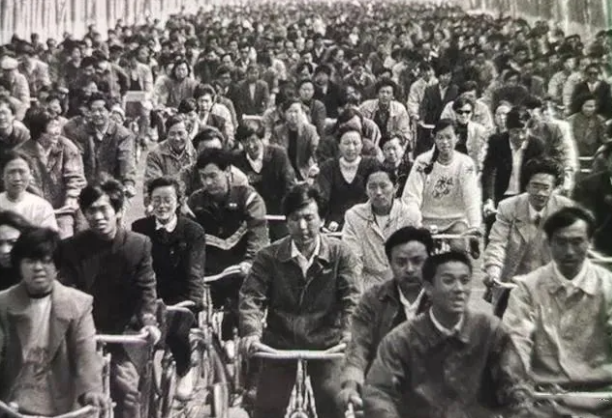
I must admit—I lack a firsthand emotional connection to the 1980s. I didn’t live through its textures or tensions. Yet, through whispered recollections of an older generation, in the flickering echoes preserved by films, literature, and art, that enigmatic decade still reaches me. Like sunlight refracted through morning dew, it glints unexpectedly—through moments that feel unfamiliar yet oddly recognizable. It slips into my consciousness like a misfit memory that somehow belongs. I find myself both curious and entranced.
Those born in the ’80s matured during a period when materialism and utilitarian values began to flood into everyday life. It was a time that admired commercial success and celebrated speculative ambition. For those of us born in the ’90s and beyond, the idealism and quiet romance of the 1980s is something we never personally experienced. Some among us barely even know of its existence—it’s a myth passed down, rather than a memory lived.
In that era, the most important mode of transportation was the bicycle. Cars were a rare sight. Like the rivers of commuters today, the streets back then were also a sea of people on wheels. Yet the rhythm was different, slower perhaps, but just as determined.
There were no smartphones, no internet, no Wi-Fi. Landlines were limited, and the bulky mobile phones—nicknamed Da Ge Da—didn’t really become a thing until the 1990s. Still, these technological gaps did not hinder communication. People simply planned ahead—when you saw someone, you already knew when you’d meet again.
That was the beginning of China’s family planning policy. Unlike today’s encouragement for childbirth, the 1980s treated population control as a national directive. Slogans promoting the policy were painted boldly across city walls—often humorous, sometimes brutal, always direct. They are now relics that vividly capture one face of that era.
There were no high-rise towers, no sprawling commercial signage, and certainly no LED screens. Advertising was done by hand—literally painted onto brick walls—and most of it lacked today’s polished aesthetics. Yet, it was honest, rooted in place and time.
In those years, the red-scarfed Young Pioneers were the guardians of public civility. These children, folding their bright scarves into perfect triangles, would patrol the streets, reminding citizens to keep the environment clean and to uphold the values of socialist civic life.
There were no commercial apartments. No rent. No mortgages. No demolitions or urban renewal. No shared ownership costs or loan plans. People lived in old family homes, and astonishingly, most had never even thought of “housing prices” as a concept.
Back then, primary school readers were different. The famous line “Little Swallow, in your flowered coat, you visit us each spring…” opened a world of innocence and rhythm. Even the notebooks from that time feel collectible today—echoes of a simpler learning environment.
That was an era when wealth had not yet carved out deep divides and social classes were still fluid. It was a time when hope still floated on the surface of daily life—before cynicism and competition fully took root.
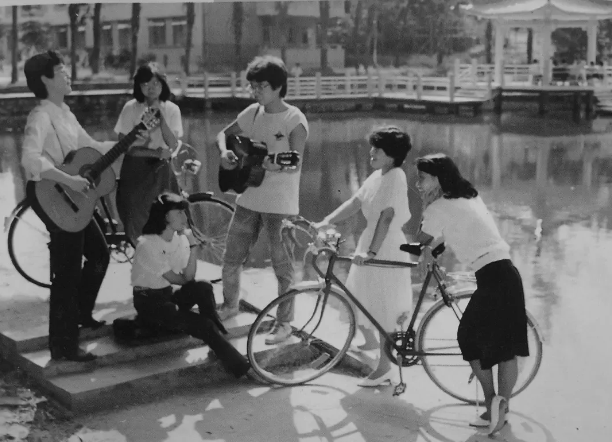
There was once an era when you could write poetry, read poetry, and discuss poetry without being labeled a fool—an era of white shirts fluttering in the wind. But that era is now gone.
At this very moment, it is August 2024, one week away from the beginning of autumn. The physical body, material and practical, has finally and honestly pulled the soul of the spirit back to reality. Time pushes us to make money; age urges us to grow old. In this era where we can no longer act freely, what is maturity? Perhaps it is the thousands of arrows that once pierced the heart, now reduced to a calm breeze and drifting clouds. Maybe there is no standard answer. Perhaps remaining silent with a smile is the best response. Or maybe, when someone tells you, “You haven’t changed at all,” that is the greatest compliment.
But we will inevitably change—because we live in this era.
And yet, we will also inevitably be left behind by this era.
I wonder—thirty years from now, or rather, certainly—someone will sit where I sit today, using deeper, more accurate, and better language to recall and write about this very era. I just don’t know how they’ll begin their writing, or how subjectively and objectively they will evaluate this time.
Different people will always have different perspectives and historical viewpoints. One must, and should, possess an independent personality and the ability to think critically. Any specific notion of an “era” must arise in response to a specific historical context. The 1980s, which remain a golden memory in the hearts of many, were a time of proud postures and high heads held aloft—yet also teeming with absurdity and roughness. But those absurdities are not what matters most.
As the scholar Zha Jianying once said, “America has produced a mountain of research and recollections about the 1960s.” When they look back on that era, there is no doubt they do so with both pain and nostalgia. Likewise, there should be ten million interpretations of the 1980s by ten million individuals.
Some say the 1980s in China were a fleeting, fragile, yet deeply captivating chapter in contemporary history. Others say, “I have always been drawn to a bygone era—not merely because I was born a few years too late and yearn for what I missed, but because of the soul-shaking spiritual power that era held—even if only through secondhand encounters, it still drove me to obsession.” Still others say: “The 1980s were both idealistic, striving, redemptive, responsible, passionate, simple, mission-driven, and full of faith—and at the same time, empty, impoverished, powerless, naïve, grandiose, romantic, and inflated. The great and the flawed intertwined, and although not materially rich, the era reached deeply into the human heart.”
Today, we find ourselves in a new historical chapter—where a once-in-a-century transformation intersects with the great rejuvenation of the Chinese nation. Those who lived through the 1980s are no longer young, but there will always be someone who is.
As we look back with nostalgia, we have no reason to worry about today’s youth. They are the chosen ones of this age—passionate, thoughtful, morally grounded, and guided by a strong sense of justice. They see the disappointing realities, but also the bright hope of the future. They are not life machines unable to distinguish between mind and medium, nor are they low-dimensional NPCs without higher souls. They refuse to drift with the tide or be drowned in hollow slogans.
Their critiques, comparisons, and disdain stem from a desire to make this country and this era better. They are filled with patriotism and humanitarian care, determined not to repeat the mistakes of history. I believe that in times of crisis, someone among them will stand up—for this nation, for this era, and for the future.
They will be more awake, more grounded, and stronger than we were. They will see life as it truly is, see this era as it truly is—and still throw themselves bravely into the lives they love.


